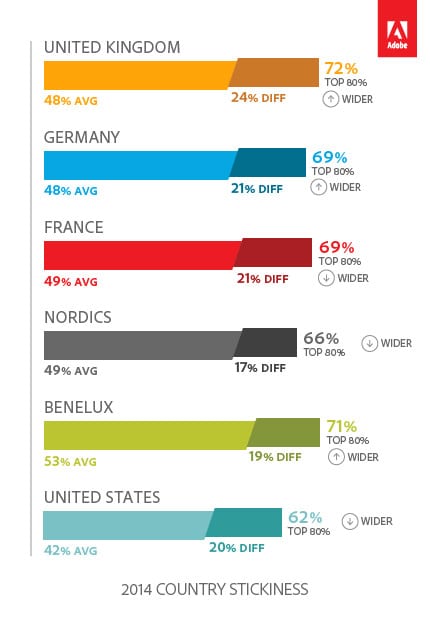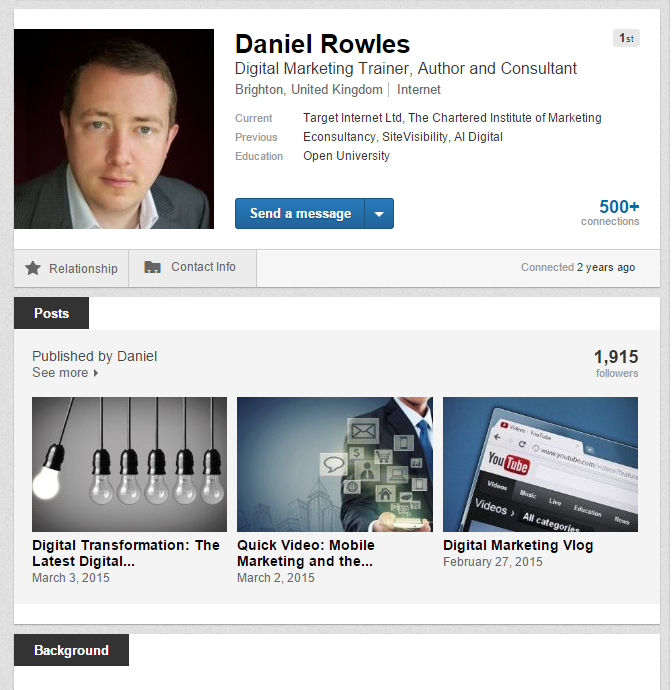If 'Last click' tells how a Conversion Story 'ends', 'Points of Attribution' paint the Full Picture
If the digital pathway to purchase was a linear and simple process, consumers would find the product they need…. and then just purchase it.
But it’s not.
How do you measure attribution?
- Before the customer makes that last click, what happened to influence the consumer to make that purchase?
- What are the points that influenced and steered the consumer to choose a particular brand over all others?
- How can a marketer understand how the different channels and different campaigns work together to produce a purchase?
- How can you attribute what delivered success and what didn’t?
Finding the answers to these questions is the ‘holy grail’ for (digital) marketers.
The Global Reviews points of the attribution model
Using findings from the Global Reviews Digital Marketing Effectiveness programme, we measure all elements of attraction which drives a consumer to choose or not to choose a particular brand.
There are a number of different touch points that can be in the model:
-
Previous relationship with the brand
Including the level of that relationship. The concept of retention – is a person already with a brand? Is the customer looking to renew? Has the relationship lapsed?
-
Online journey
Where are consumers being intercepted online and what messages are they seeing as they move through the digital journey? Looking at things like Search engine, aggregators, affiliate models, online advertising, banner ads and SEM.
Traditional through the line advertising - including TV, billboards and radio advertising.
All of these elements feed forward and push value statements through to consumers to consider a particular brand.
Fig 1: The Global Reviews Points of Attribution Model

An example: Health Insurance Providers in Ireland
We ran a Digital Marketing Effectiveness (DME)* study of the Health Insurance providers in Ireland in February. The DME measures how effective Irish health insurance providers are at attracting customers online. ‘In market’ consumer data is gathered at each stage of the sales and acquisition funnel and rolled up into scores. These scores benchmark each provider against other providers and against the industry average.
Aviva’s website challenge
A fifth of consumers chose Aviva as their preferred provider in the February study, but this figure is down 7% since August 2014. We know from the results of the DME that the propensity to actually purchase increases if consumers visit the brand's website.
Irish consumers are far more likely to choose the provider whose website they visit on the purchase decision journey - but only 8% of all consumers in Ireland are visiting Aviva’s site. Compare this to 50% for Vhi’s website and 34% for both Laya Healthcare and Glo Health websites.
Aviva is depending too much on the strength of its brand but the results of our research indicate that the importance of previous brand relationship in choosing a health insurance provider is beginning to erode.
Not enough Irish consumers are visiting Aviva’s site. Aviva is under leveraging its website as a point of attribution.
Laya Healthcare is becoming more attractive as an alternative to Vhi
Between August 2014 and February 2015 Aviva’s weighted unprompted brand recall fell from 53% to 48%, whereas Laya Healthcare’s score improved from 36% to 43% over the same period.
Laya Healthcare is increasingly becoming the most attractive option as an alternative to Vhi, replacing Aviva who traditionally held the second place spot.
Vhi is, not surprisingly, the first health insurance provider Irish consumers think of when asked to recall brands. The percentage of consumers that recall Aviva after Vhi has dropped from 30% to 24% between August 2014 and February 2015, while Laya Healthcare’s score increased from 19% to 25% over the same six month period
These figures and Laya Healthcare’s increasing ‘top of mind’ recall score indicate that advertising is an effective point of attribution for them.
Three key touch points
The three key touch points Irish consumers move through when searching for a health insurance provider online are:
- 1. A search engine which is used by 91%
- 2. While 76% visit the brand website
- 3. and 31% use a research website
Unlike consumers in the UK, very few consumers used an aggregator site. The brand website is hugely important as a point of attribution for health insurance providers in Ireland.
Fig 2: Breakdown of how that actual journey takes place

The search engine is not delivering for Aviva, but is for Laya Healthcare
Even though Aviva has a strong presence on the search engine results, the majority of consumers looking for health insurance online in Ireland are still not clicking on Aviva and visiting the Aviva website.
However, Laya Healthcare is enjoying a lot more success from both organic results and paid contextual ads on Google.
What’s interesting to note is that 29% actually clicked on Laya Healthcare from this results page – either on the organic results (which is interestingly listed underneath Aviva) or the “Healthcare from €9 a week” ad on the right hand side. In fact Laya Healthcare scored higher than any other brand.
When used cleverly the search engine can be a very effective point of attribution.

The search is on for Laya Healthcare
Laya Healthcares’s advertising is definitely working as consumers are being prompted to use 'Laya Healthcare' and 'Laya' as keywords when searching for a health insurance provider on Google.
Usage of their brand name as a search keyword has increased from 9% in August 2014 to 15% in February 2015 while other brand terms have dropped.

Laya is being very clever in their approach to both SEO and SEM, making search a successful point of attribution for them.
*Digital marketing effectiveness
The Global Reviews Digital Marketing Effectiveness (DME) programme focuses on the Discover and Consider stages of the online purchase journey. The best results come from continuous measurement.
The DME identifies both the barriers and enablers to how and who consumers shortlist in the online purchasing decision journey, what drives final preference and crucially WHY your potential customers (but now lost opportunities) pick another brand over yours. We use life-like methodology which virtually places companies in the homes of 50,000 ‘In market’ consumers in the UK annually. Adopting both a passive and claimed research approach, we bridge the gap between claimed search behaviour and actual search behaviour. Using cutting edge technology we measure every key stroke, link clicked and website visited. Most importantly, our methodology investigates and explores WHY consumers search and research the way they do.
We can provide you with a unique insight into how ‘in market’ consumers research and make decisions about your brand, your products and your competitors online and will help you to answer the following strategic marketing questions:
1. How integrated is your offline (traditional) marketing with your digital strategy?
2. Why are competitors winning the online prospects you are losing?
3. Who is stealing the prospects that short listed you?
4. How can you reduce lost opportunities and increase sales?
Source: Global Reviews Digital Marketing Effectiveness studies into Health Insurance Providers in Ireland, August 2014 and February 2015
Image/Copyright: Royalty free shutterstock.com
 Thanks to Marie Sheehan for sharing her advice and opinions in this post. Marie has 14 years' experience in traditional, digital and strategic marketing communications. She is the Head of Marketing (Europe) at Global Reviews. Global Reviews is a world leading online customer experience intelligence and digital research company provides companies with key customer insights on how to substantially increase their digital marketing effectiveness and digital sales outcomes, by helping companies measure, track and optimise their online and mobile sales effectiveness; by helping marketers understand the journeys and purchasing behaviour of in future customers and by providing marketers and digital specialists with up to the minute insights into what best practice online customer experience looks like around the world. Global Reviews’ clients include many of the world's leading insurance, energy, banking, travel, sports betting and retail companies. You can follow Global reviews on Twitter. You can watch their video on 'Finding their Missing Why'
Thanks to Marie Sheehan for sharing her advice and opinions in this post. Marie has 14 years' experience in traditional, digital and strategic marketing communications. She is the Head of Marketing (Europe) at Global Reviews. Global Reviews is a world leading online customer experience intelligence and digital research company provides companies with key customer insights on how to substantially increase their digital marketing effectiveness and digital sales outcomes, by helping companies measure, track and optimise their online and mobile sales effectiveness; by helping marketers understand the journeys and purchasing behaviour of in future customers and by providing marketers and digital specialists with up to the minute insights into what best practice online customer experience looks like around the world. Global Reviews’ clients include many of the world's leading insurance, energy, banking, travel, sports betting and retail companies. You can follow Global reviews on Twitter. You can watch their video on 'Finding their Missing Why'
from Smart Insights http://ift.tt/1IirxUb
via
IFTTT
For reference, the benchmarks compare the best sites to the average using this method:
 Visit or Returning visitor Rate
Visit or Returning visitor RateIf you'd like to review the full research you can download the report via CMO.com site. Smart Insights have a fuller compilation of mobile marketing research.


 Thanks to Marie Sheehan for sharing her advice and opinions in this post. Marie has 14 years' experience in traditional, digital and strategic marketing communications. She is the Head of Marketing (Europe) at Global Reviews.
Thanks to Marie Sheehan for sharing her advice and opinions in this post. Marie has 14 years' experience in traditional, digital and strategic marketing communications. She is the Head of Marketing (Europe) at Global Reviews.  Thanks to Martin Harrison for sharing his advice and opinions in this post. Martin is co-founder of copywriting service
Thanks to Martin Harrison for sharing his advice and opinions in this post. Martin is co-founder of copywriting service